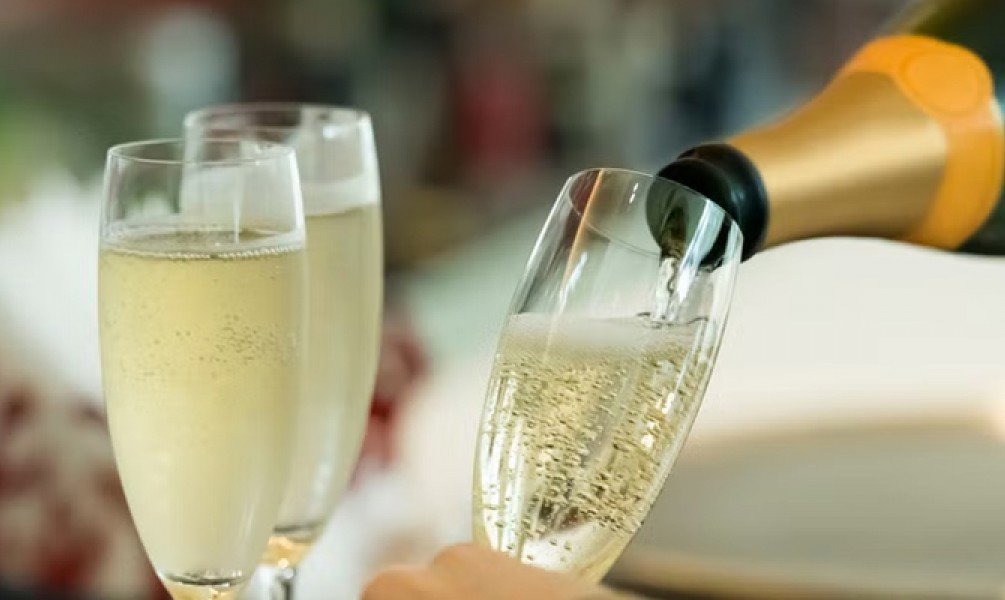
Raising the bar of luxury with its unmatched quality, only a select few can fiercely rival the prestige of champagne. It's no wonder that at life's milestones, such as birthdays, holidays, and corporate events, this French beauty preaches the art of celebrating, drenching the party mood with its dazzling mousseful taste—an electric conversation starter with effervescent bubbles tickling the senses and leaving a trail of elegance on the palate.
However, it's important to recognize the slope of indulgence involved. While most champagne lovers prefer affordable bottles for their pervasive toasts and jubilant celebrations, the world of high-end champagne offers extravagance reserved for those with a taste for the finer things in life. These expensive bottles are one-of-a-kind experiences, liquid legacies crafted with precision, patience, and cult expertise. This makes them gem-like-rare, commanding astronomical prices, attention worthy of investment, and collectible value.
Whether you are a seasoned connoisseur, a collector, an investor, or simply curious enough to spend a fortune on premium champagne, we’ve got your lavish desires covered. In this article, we will delve into the world of the most expensive champagnes, uncovering the secrets that elevate these sparklings to legendary status and much more. We’ll also guide you in selecting an expensive champagne that stands head and shoulders above others for you, ensuring you relish the splurge full journey in the champagne world, worth each dollar.
How Much Does Expensive Champagne Cost?
There is no steadfast answer to this, as the cost of an expensive champagne depends on various factors such as brand, vintage, production methods, and overall quality. Generally, you can expect to pay anywhere from several hundred to more than a thousand dollars per bottle. Here’re some details to give you a clearer picture:
Price Ranges: Entry-Level to Ultra-Expensive Champagne Brands
Brands like Veuve Clicquot and Moet & Chandon offer entry-level, expensive champagnes, around $100. Mid-range champagne from reputable brands like Billecart Salmon and Ruinart cost between $100 and $300. The splurge peaks with ultra-expensive brands such as Dom Perignon, Krug, and Armand De Brignac, which offer bubbles with gold-plated prices ranging from $300 to over $1000.
Price Variations Within Champagne Brands
Within an expensive champagne brand, the cost of a bottle can vary, sometimes swelling or shrinking. Non-vintage champagnes, such as those from Moet & Chandon are generally less expensive than their vintage counterparts. Among vintages, prices can vary, with older and more premium vintages commanding higher prices, such as the Dom Perignon Vintage 2012, which is less expensive than the Dom Vintage 2010.
Additionally, prestige cuvees, which are top-of-the-line champagnes, can surpass even vintage prices. Notable examples include Louis Roederer Cristal, Dom Pérignon P2, and Krug Clos d’Ambonnay.
Impact of Other Factors: Large-Format Bottles, Limited Editions & More
Large-format bottles, such as Magnums or Jeroboams, which hold double and triple the standard 750-ml bottle, are also more expensive due to their rarity and lower production levels.
Costs can escalate further if the bottle happens to be a limited edition, like the 2013 Armand de Brignac Rosé 30-liter Midas, which has sold for over $200,000. Rare finds, such as a bottle of 1820 Juglar Cuvée Champagne that fetched over $43,000 at auction, or the historical 1907 Heidsieck & Co. Monopole Diamant Bleu "Shipwrecked" Champagne that cost around $275,000.
Top Expensive Champagnes
Brand: Krug
Alcohol By Volume (ABV): 12%
Suited Palate: Complex, Mineral-Driven
Best-Suited Occasions: Collector’s Tastings, High-End Wine Dinners, Exclusive Celebrations
Food Pairing: Scallops, White Truffle Dishes, Fine Cheeses
Ruling the pedestal of luxury since 1843, Krug has never failed to impress with its serious craftsmanship, producing rich, complex, age-worthy champagnes that meet the highest standards. Beloved by oenophiles, collectors, connoisseurs, and sommeliers alike, we spotlight one of its two lauded single-vineyard champagnes, Clos du Mensil Blanc de Blancs, launched with the 1979 vintage. Sourced from a walled vineyard in the heart of Le Mesnil-sur-Oger, this expensive champagne is 100% chardonnay and boasts a remarkable complexity of citrus, almond, and mineral flavors.
Brand: Krug
Alcohol By Volume (ABV): 12.5%
Suited Palate: Rare, Deep-Flavored
Best-Suited Occasions: Ultra-Exclusive Events, High-Profile Celebrations, Collector’s Showcases
Food Pairing: Game Dishes, Aged Cheeses, Gourmet Charcuterie
As more proof of our failed resistance to Krug’s allure, here’s the brand’s second acclaimed single-vineyard champagne, Blanc de Noirs, launched with the 1995 vintage. Made from 100% Pinot Noir, this expensive champagne commands even a higher price, reflecting more intricate vineyard sourcing, intensive production, limited supply, and greater market positioning. Like any Krug vintage, it is aged for at least 10 years, offering complexity and depth with notes of ripe red fruits, toasted brioche, and a hint of spice, culminating in a long, elegant finish.
Brand: Dom Pérignon
Alcohol By Volume (ABV): 12.5%
Suited Palate: Balanced, Elegant, Creamy
Best-Suited Occasions: Milestone Celebrations, Weddings, Special Anniversaries
Food Pairing: Lobster, Foie Gras, Aged Cheeses
Here’s Dom Perignon's flagship, one of the most expensive champagne brands, famous since 1921 for producing bonzer bubbles that pay homage to the pioneer monk of the champagne world after whom it was named. Like all its offerings, this champagne is luxurious, rare, vintage by soul, blends Chardonnay and Pinot Noir, and sheerly complex, with a lengthy cellar stay of at least 8 years. Speaking of peculiarity, it is vibrant and has layers of citrus, stone fruits, and toasty brioche, harmonized with a creamy texture and refined minerality.
Brand: Dom Pérignon
Alcohol By Volume (ABV): 12.5%
Suited Palate: Extra Complex, Refined, Multi-Layered
Best-Suited Occasions: Exclusive Gatherings, Luxurious dinners, Prestigious Events
Food Pairing: Caviar, Truffle Dishes, Gourmet Seafood
Introducing yet another Dom Perignon masterpiece, Plentitude (P2), aka "Second Plentitude," which pushes the boundaries of the highest-degree Prestige Cuvees. Broad-shouldered head-to-toe, this expensive champagne is pricier, rarer, of more exceptional year, and matured to a higher complexity over a period of 15 years. When popped, each sip serves paradise to taste buds with a vibrant yet dynamic palate, bouncing back and forth from notes of crisp green apple and zesty citrus to delicate hints of toasted almond and rich caramel.
Brand: Louis Roederer
Alcohol By Volume (ABV): 12%
Suited Palate: Pure, Elegant, Delicate Mousse
Best-Suited Occasions: Gala Events, High-End Parties, Celebratory Toasts
Food Pairing: Oysters, Sashimi, Light Appetizers
No less than the jewel in the crown for Louis Roederer, their Cristal expression speaks volumes about opulence and elegance. Remarkably, this expensive champagne has been royal since its on-demand creation in 1876 by Tsar Alexander II of Russia, who desired a fine bubbly that would also prevent sneak peeks of bombs with its transparent look. Further, it teases with petal-soft golden hues that play a symphony of purity and flavors, including white fruit, citrus, and floral notes, all topped off with a creamy mousse like a cherry on top.
Brand: Pol Roger
Alcohol By Volume (ABV): 12.5%
Suited Palate: Robust, Full-Bodied
Best-Suited Occasions: Historical Commemorations, Elegant Dinners, Prestigious Events
Food Pairing: Roasted Poultry, Truffle Dishes, Matured Cheeses
Steeped in history and tradition, Pol Roger Cuvée Sir Winston Churchill pays homage to the legendary British Prime Minister, renowned not only for his statesmanship but also for his love of fine champagne. Inaugurated in 1975, this expensive champagne has consistently met the bar of excellence across decades, allowing each drinker to experience bubbly as Churchill did—robust, rich, and full-bodied. It ages its blend of Pinot Noir and Chardonnay for over 10 years and, when served, reveals a deep, toasty character with flavors of toasted brioche, dried fruit, and honey.
Brand: Billecart-Salmon
Alcohol By Volume (ABV): 12.5%
Suited Palate: Layered, Balanced, Fresh Finish
Best-Suited Occasions: Elegant Dinners, Milestone Celebrations, Gourmet Gatherings
Food Pairing: Seafood, Poultry, Light Desserts
Billecart-Salmon Cuvée Nicolas Francois is one of the supreme vintages ever conceived. A tribute to one of the house’s founders, Nicolas François Billecart, this expensive champagne personifies the family ethos that defines their legacy. It promises a whale of time with its complex bouquet on the nose and a palate that perfectly balances freshness and balance. Vibrant acidity balances its rich, creamy texture, revealing layers of apple, pear, and subtle spice, leading to a long, nuanced finish.
Brand: Veuve Clicquot
Alcohol By Volume (ABV): 12.5%
Suited Palate: Refined, Intensely Flavored Rosé
Best-Suited Occasions: Sophisticated Gatherings, Romantic Dinners, Celebratory Events
Food Pairing: Duck, Lamb, Berry Desserts
Since its inception in 1772, Veuve Clicquot has heroically spread celebrity culture in the champagne world, enduring phylloxera, world wars, and more while pioneering innovations like the first vintage, riddling tables, and more. A true trailblazer, Veuve is easily recognizable by its iconic yellow, but here it is blushing, denoting a rose style, in the Prestige Cuvee standard. This expensive champagne gleams salmon hues that flaunt its refined character, orchestrating a bouquet and palate that balance vibrant acidity with a creamy texture, culminating in a long, elegant finish.
Brand: Perrier Jouët
Alcohol By Volume (ABV): 12.5%
Suited Palate: Delicately Flavored Rosé
Best-Suited Occasions: Romantic Dinners, Artful Celebrations, Elegant Receptions
Food Pairing: Duck, Salmon, Berry-Based Desserts
Elevate the pink champagne experience with Belle Epoque Rosé from Perrier-Jouët, a brand favorite of royals like Queen Victoria and Napoleon III. This expensive champagne is light, elegant, and true-brut, featuring a palate with delicate floral nuances, notes of red berries, and a subtle citrus zest, complemented by crisp acidity and a silky, lingering finish. And I bet those instagrammable pastel floral designs on the bottle aren't mere visual treats; they symbolize the bubbly's delicacy and floral intensity to the core.
Brand: Laurent-Perrier
Alcohol By Volume (ABV): 12%
Suited Palate: Complex, Expertly Blended
Best-Suited Occasions: High-End Gatherings, Formal Dinners, Celebratory Toasts
Food Pairing: Shellfish, White Meats, Fine Cheeses
Drenched in bold black hues, Grand Siècle Laurent Perrier No. 25 unveils like a theatrical episode, where the dusk gracefully gives way to brightness, echoing the grandeur of the Grand Siècle era led by Louis XIV, symbolized by its Sun-King logo. This expensive champagne pushes the boundaries of blending with a harmonious fusion of Chardonnay and Pinot Noir from three exceptional vintages. Each sip unfolds with finesse and depth, teasing the nose with ripe fruits, toasted brioche, and spice, all underpinned by vibrant acidity and refined minerality.
Brand: Nicolas Feuillatte
Alcohol By Volume (ABV): 12%
Suited Palate: Expressive, Elegantly Balanced
Best-Suited Occasions: Upscale Parties, Formal Receptions, Celebratory Toasts
Food Pairing: Seared Tuna, Poultry Dishes, Gourmet Salads
We're sure your heart raced at the sight of this gorgeous bubbly from Nicolas Feuillatte. This bottle, with its bubble-wrap feel, pays homage to a magnificent opera singer who was obsessed with black pearls. The texture inside is just as spellbinding, offering balanced mouthfeel binded with a floral bouquet and notes of ripe citrus and brioche. As the icing on the cake, the brand is feverishly dedicated to sustainable winemaking practices, making this expensive champagne a treasure for nature lovers.
Brand: Delamotte
Alcohol By Volume (ABV): 12%
Suited Palate: Vibrant, Elegant With a Mineral Edge
Best-Suited Occasions: Formal Dinners, High-End Receptions, Sophisticated Gatherings
Food Pairing: Seafood, Especially Scallops and Lobster and Light, Creamy Dishes
Emerging from the esteemed vineyards of Le Mensil-sur-Oger, this expensive champagne from Delamotte is best defined as pure and elegant. Styled Blanc de Blancs, it is made exclusively from Chardonnay grapes, handpicked from some of the finest plots in the Côtes des Blancs. Each vintage celebrates the exceptional terrier of chalky soils and sun-kissed slopes, exploding a flavorful confetti on the palate, from crisp citrus notes to subtle minerality. Each element shines on its own and together, culminating in a long, persistent finish.
Brand: Pommery
Alcohol By Volume (ABV): 13%
Suited Palate: Pure, Crisp, Dry Finish
Best-Suited Occasions: Fine Dining, Formal Receptions, Connoisseur Tastings
Food Pairing: Shellfish, Sushi and Light, Creamy Cheeses
Founded in 1858, Pommery, with a family history in wool production, has long been a pioneering spirit. It made the Brut champagne debut, and it continues to innovate with bottles like this one. With its bone-dry profile, this expensive champagne mirrors the purity of its blend of Chardonnay and Pinot Noir, aged in the house's chalk tunnels spanning 18 km. Pale gold in color, its bubbles dance as if at a party, while its aroma and flavor jazz up with notes of green apple and a crisp, mineral finish.
Does Expensive Champagne Worth The Price? If So, Why?
Do expensive champagnes truly justify their hefty price tags, or are they just fancy labels inflated by brand polishing and marketing gimmicks? Are they like designer bags, where the brand matters more than the quality, akin to a hipster with a Louis Vuitton or Hermes bag, when any quality bag would suffice?
In essence, the value proposition of expensive champagne is multifaceted and subjective. However, several factors contribute to the perceived worth of these coveted bubbles:
-
Terroir Excellence: Expensive champagnes originate from specific renowned vineyard sites or Grand Cru and Premier Cru villages in the Champagne region of France, best showcasing the terroir’s geographical richness of chalky soil, cool climate and distinctive microclimates.
-
Craftsmanship Legacy: Producers of expensive champagne are often industry pioneers, with generations of experience honing the craft of champagne, resulting in bubbles that epitomize balance and depth.
-
Sensory Extravaganza: The sensory experience of expensive champagne is unparalleled, offering a complex array of flavors ranging from brioche to mineral notes, accompanied by a creamy texture and a long-lasting finish.
-
Rare Gems: Rarity is a key factor in justifying the high price of expensive champagne, as champagne houses prioritize quality over quantity through methods such as lengthy aging, selective vintage releases, and Prestige cuvees.
-
Marketing and Perception: Even though they are miles ahead in craftsmanship, expensive champagnes leverage strategic marketing and branding to cultivate an image of luxury and exclusivity. Celebrity endorsements, high-profile sponsorships, and prominent placements in popular media play a crucial role.
Notably, Dom Perignon's presence at the Oscars, Moet & Chandon's sponsorship of the ATP World Tour Finals, and Veuve Clicquot's limited edition bottles in collaboration with Yayoi Kusama are prime examples.
Does Champagne Need To Be Expensive To Be The Best?
Anyone into wines is familiar with the frenzy for pricey bottles being hailed as the best in quality. But a true snob knows that’s a myth worth debunking. In reality, champagne doesn’t have to be expensive to be considered the best. While high-end champagnes often boast superior quality due to better terroir, craftsmanship and rarity, many excellent champagnes are available at more affordable prices.
These reasonably priced bubbles are hidden gems that offer delightful sensory experiences, produced with great care by reputable houses and small producers alike. Often, wine enthusiasts switch to non-vintage champagnes from smaller, less known producers that provide exceptional quality without the premium price tag.
Moreover, expensive champagnes tend to be less approachable for many due to their higher complexity, dryness and depth. Their inflated prices also make them less suitable for casual drinking. In such cases, inexpensive champagnes come to the rescue, offering approachability and ensuring that day-to-day celebrations on a budget don’t miss out on the bubbly dazzle.
Ultimately, whether an expensive champagne is the best is a hotly debated topic. There is always a gray area where individual preferences for flavor profiles, occasions and budget come into play.
How To Invest in an Expensive Champagne?
Investing in champagne goes beyond its delightful taste and persona, which are the end results of blood, sweat, and tears—it’s a gateway to luxury, heritage, and exclusivity. With global appeal, expensive champagne offers lucrative investment opportunities, enhancing an investor’s portfolio with intrinsic value. Brand reputation and rarity are key factors, as limited quantities increase in value over time due to rising scarcity and high demand.
Let’s delve into how to capitalize on this sophisticated investment avenue and churn profits effectively:
-
Research and Select Wisely: Dive deep into the champagne world and gain a deeper understanding on how to map potential profits. Most recommended sources for thorough research are Wine Spectator and Decanter, educating on which champagne producers continue to excel at, potential appreciation of specific bottles over time, and more.
-
Market Monitoring and Timing: Stay up-to-date on evolving market trends, price fluctuations, and demand levels in the world of champagne investment through sources like the Financial Times and Live-ex. This monitoring will let you make informed decisions on when to buy, sell, and hold your champagne bottles, ensuring your investments in expensive champagne stay valuable.
-
Vintage Selection: When deciding to invest, the vintage choice is critical. People tend to appreciate champagne from exceptional vintages more quickly and consistently. You can best rely on trusted sources to gain insights into which years have produced outstanding champagne, like expert opinions, champagne-specific magazines, reputable publications such as Wine-Searcher Pro, vintage charts, or reviews.
-
Seek Expert Consultation: When you are in a true dilemma about investing in champagne or are fickle with your decisions due to the complexities of the champagne market, it is best to seek expert consultation from financial experts and wine investment specialists like Cult Wines and Vin-x. It will enhance your understanding, refine your investment strategy, and help you make confident investment decisions in expensive champagne.
-
Personal Investment Horizon: One should consider investment horizons carefully, as they put personal finances at risk suddenly. So before you invest, make sure you have clarity on your financial goals, risk tolerance, and timeframe for holding champagne investments, whether you are looking for short-term gains or long-term appreciation.
Storage Suggestions For an Expensive Champagne:
Champagne is a very delicate drink whose quality and taste can be drastically affected by improper storage conditions. And when dealing with expensive champagne, the matter is more sensitive with so much money on stake. Therefore, when you acquire a bottle of expensive champagne, either as an investment or for future enjoyment, it becomes your moral duty to store it correctly to preserve its goodness and value.
To ensure the preservation of your beloved bubbly, follow this checklist:
-
Temperature Control: Store your champagne at a temperature around 50-55°F (10-13°C). Avoid extreme temperatures and keep the temperature consistent, as fluctuations can spoil the champagne.
-
Humidity Check: Ensure that the humidity level is around 70%. This is crucial to prevent the cork from drying out and allowing air to seep in, which can oxidize the champagne. Avoid excessive humidity, which can lead to mold growth on the label and corks.
-
Suited Position: Place the bottle horizontally to keep the cork moist. This ensures a tight seal and prevents oxidation.
-
Light Protection: Store the champagne in a dark place to guard it from light, especially UV rays, which can damage the bubbly and cause it to develop off-flavors, known in wine terms as "lightstruck”.
-
Vibration-Free Environment: Ensure the storage space is free from vibrations, as constant movement can disturb the sediment and affect the champagne’s quality.
-
Air Quality: Make sure the surrounding air is free of strong odors, as champagne can absorb external smells through the cork.
Serving Suggestions For an Expensive Champagne:
When it comes to savoring champagne, proper serving is just as crucial as its selection and storage. This preserves the quality and enhances the overall tasting experience by allowing you to fully appreciate the spectrum of flavors and aromas. Extra attention is required for expensive champagnes, which are typically more nuanced and delicate, demanding diligent handling to bring out their full potential.
Here are some key tips for serving your prized bottle:
-
Chill to the Perfect Temperature: Champagne should be served chilled, around 45-50°F (7-10°C) , to balance its flavors and aromas while maintaining its effervescence. To chill your bubbly, place it in an ice bucket for 20-30 minutes or refrigerate it for a few hours. Avoid freezing or using ice!
-
Gently Open the Bottle: Open the champagne bottle rightly by first removing the cage and then slowly twisting it from the base. Avoid shaking the bottle, as it can trigger the pressure inside and cause the cork to shoot out, resulting in wastage or injuring one in its trajectory.
-
Use the Right Glassware: The right kind of glass is essential while serving and drinking champagne, as it beautifully flaunts the bubbles, aromas, taste and golden hue. You can use traditional flutes, which are excellent at preserving the bubbles, or tulip glasses, which experts recommend due to the wider bowl and narrower rim, allowing better aroma concentration and appreciation of the champagne’s complexity.
-
Proper Pouring Technique: Pouring correctly is crucial for both aesthetics and enjoyment. Choose clean, polished glasses and as you pour, angle them at 45 degrees to avoid excessive foaming. Fill no more than two-thirds to allow room for swirling and the bubbly to open up. As a helpful tip for party-planning, typically, a standard bottle of champagne serves 6 glasses.
-
Paring with Food: Champagne pairs wonderfully with food, complementing and enhancing each other’s flavors. Here are quick tips for pairing champagne with food:
Champagne Types
Food Pairings
Brut Champagnes
Oysters, Caviar, Sushi
Blanc de Blancs
Seafood, such as Scallops and Lobster
Rosé Champagnes
Duck, Salmon, Berry-Based Desserts
Vintage and Prestige Cuvées
Foie Gras, Truffles, Fine Cheeses
Sweeter Champagnes
(Dem-Sec or Doux)Fruit Tarts, Creamy Pastries, Blue Cheeses
-
Enjoy Responsibly: Drink in moderation. Even though champagne has a lower ABV than other wines, its bubbles cause the alcohol to be absorbed faster into the bloodstream, potentially leading to quicker intoxication.
Final Thoughts:
To wrap up, whether you’re popping bottles like a champagne connoisseur or simply curious about the bubbly world, remember that life’s too short to sip subpar sparkles. So go ahead, indulge in a flute of extravagance, let the bubbles tickle your fancy, and raise your glass to the effervescent symphony of luxury.





















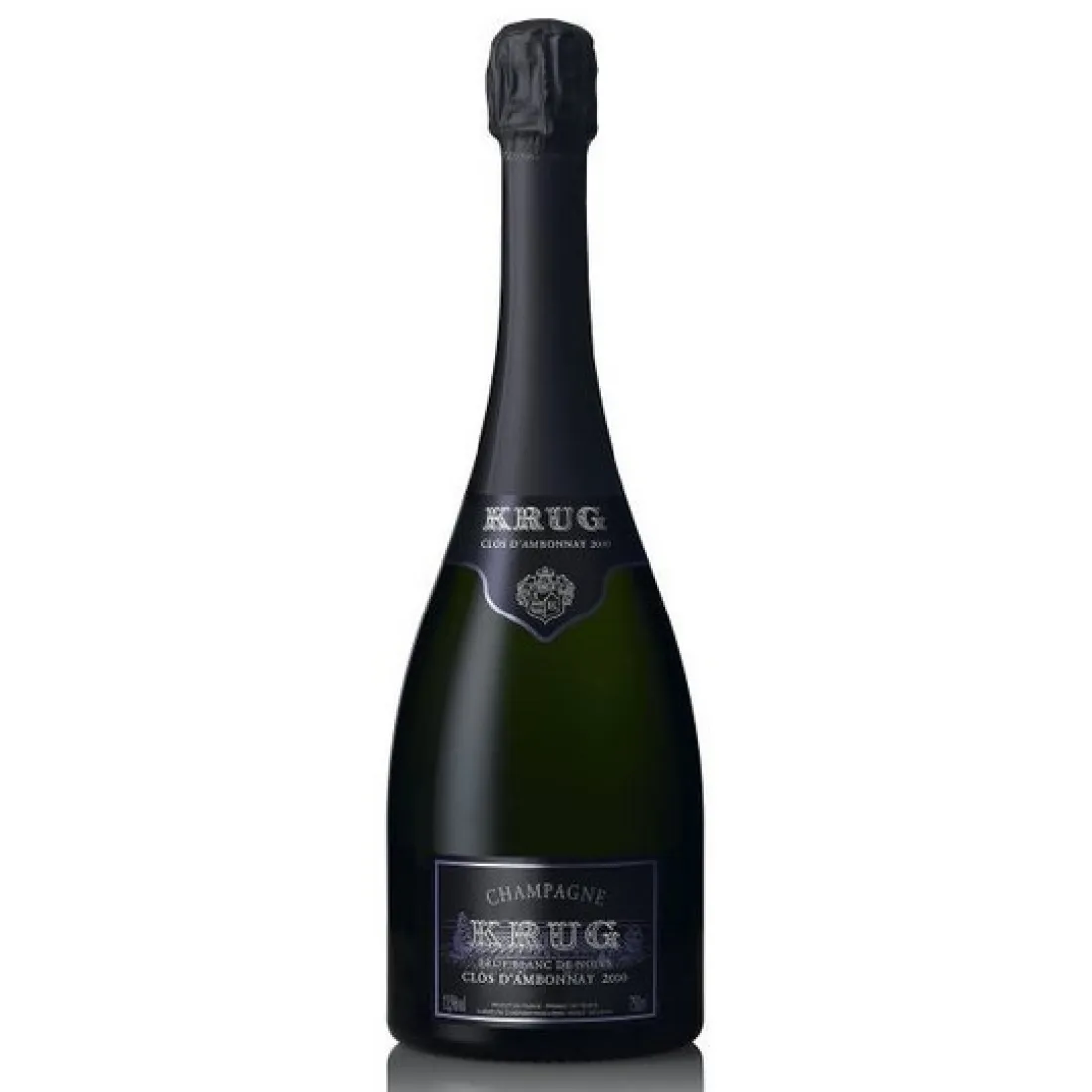

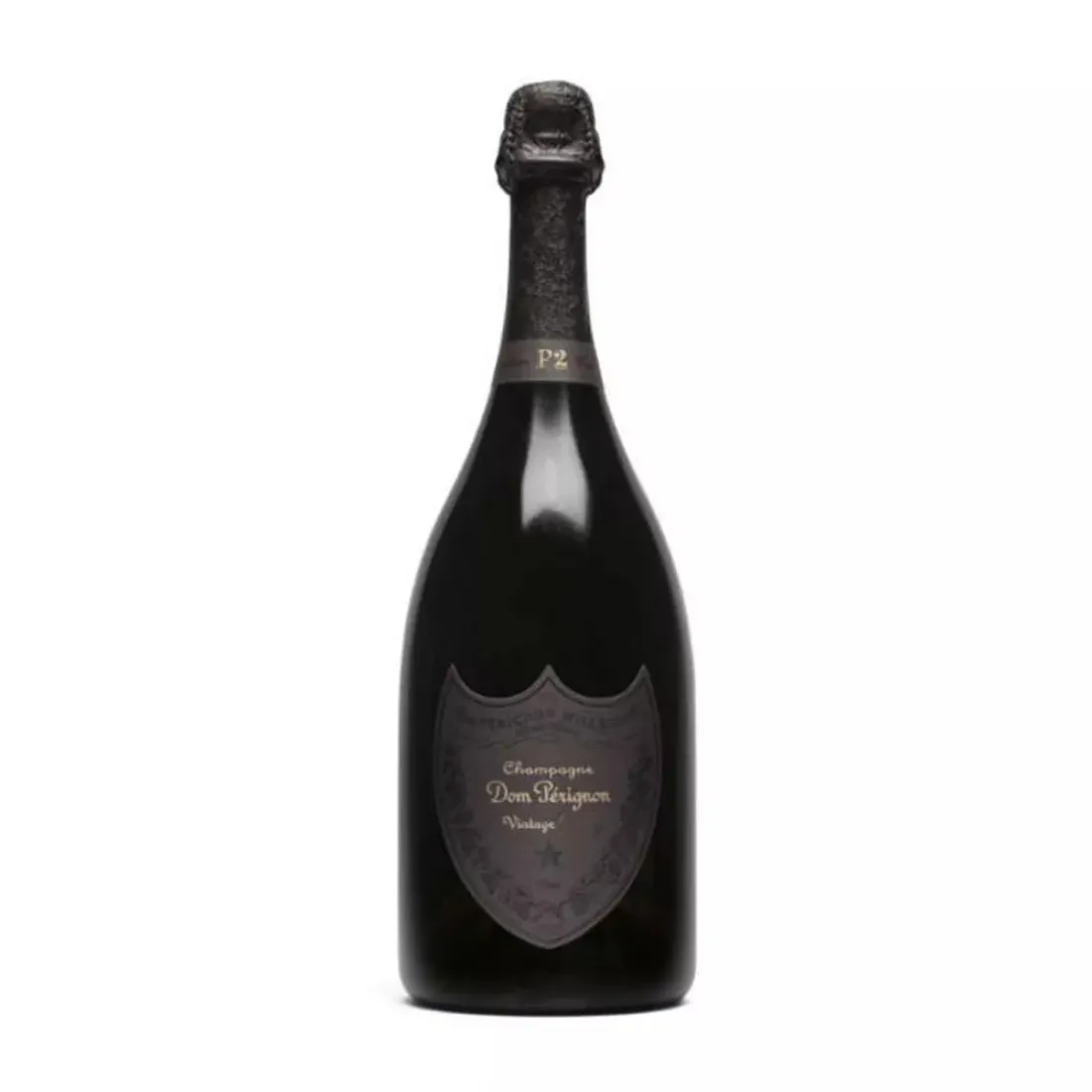
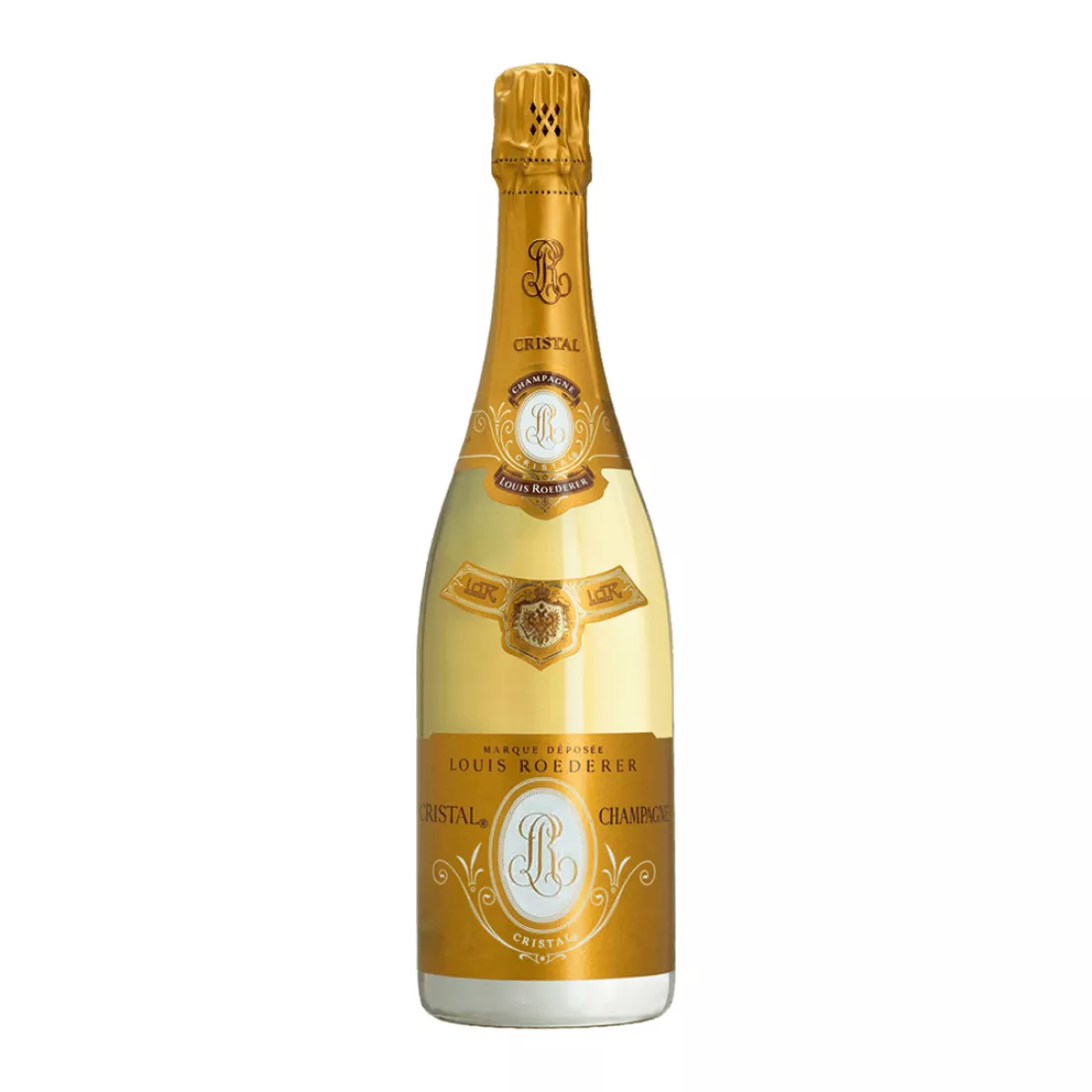
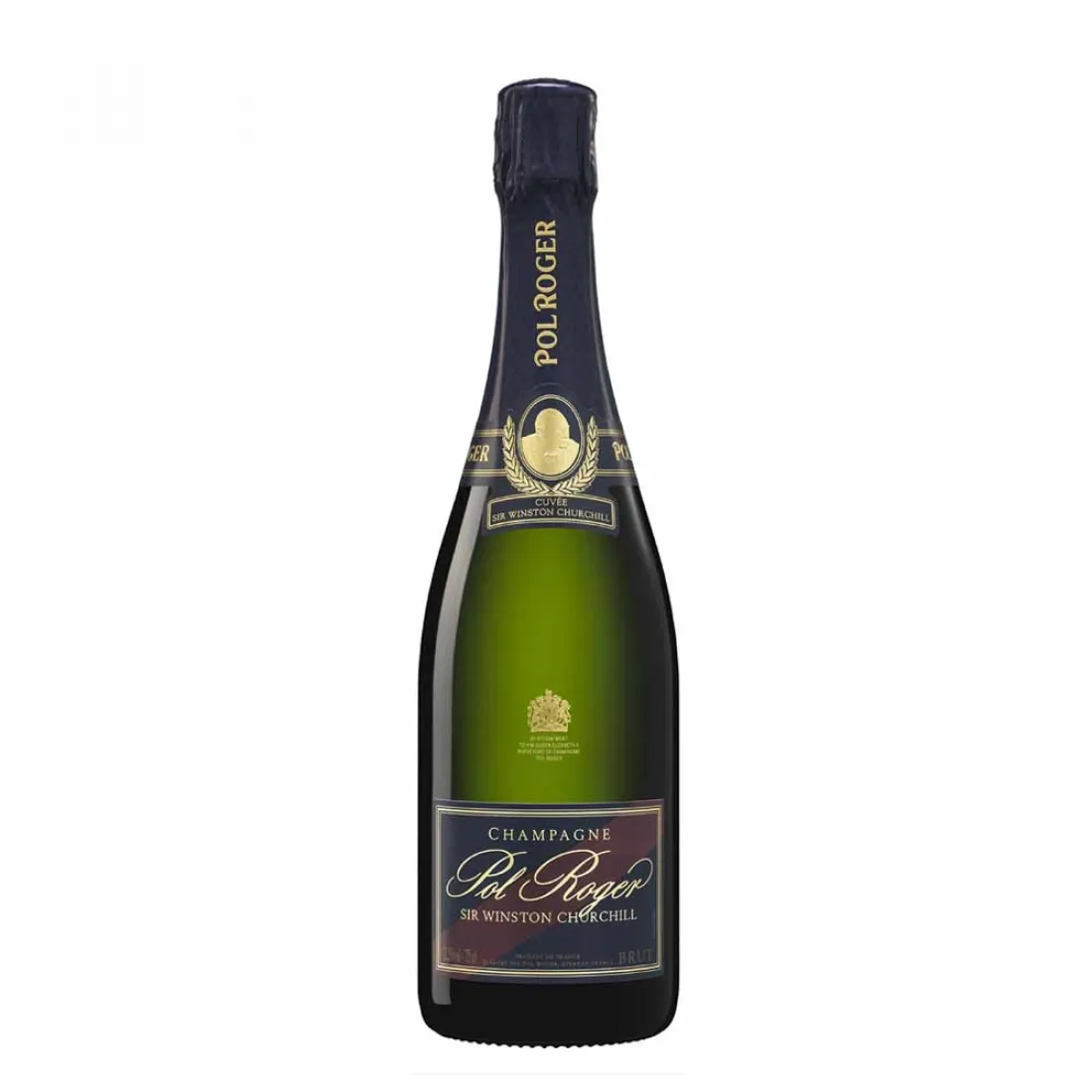



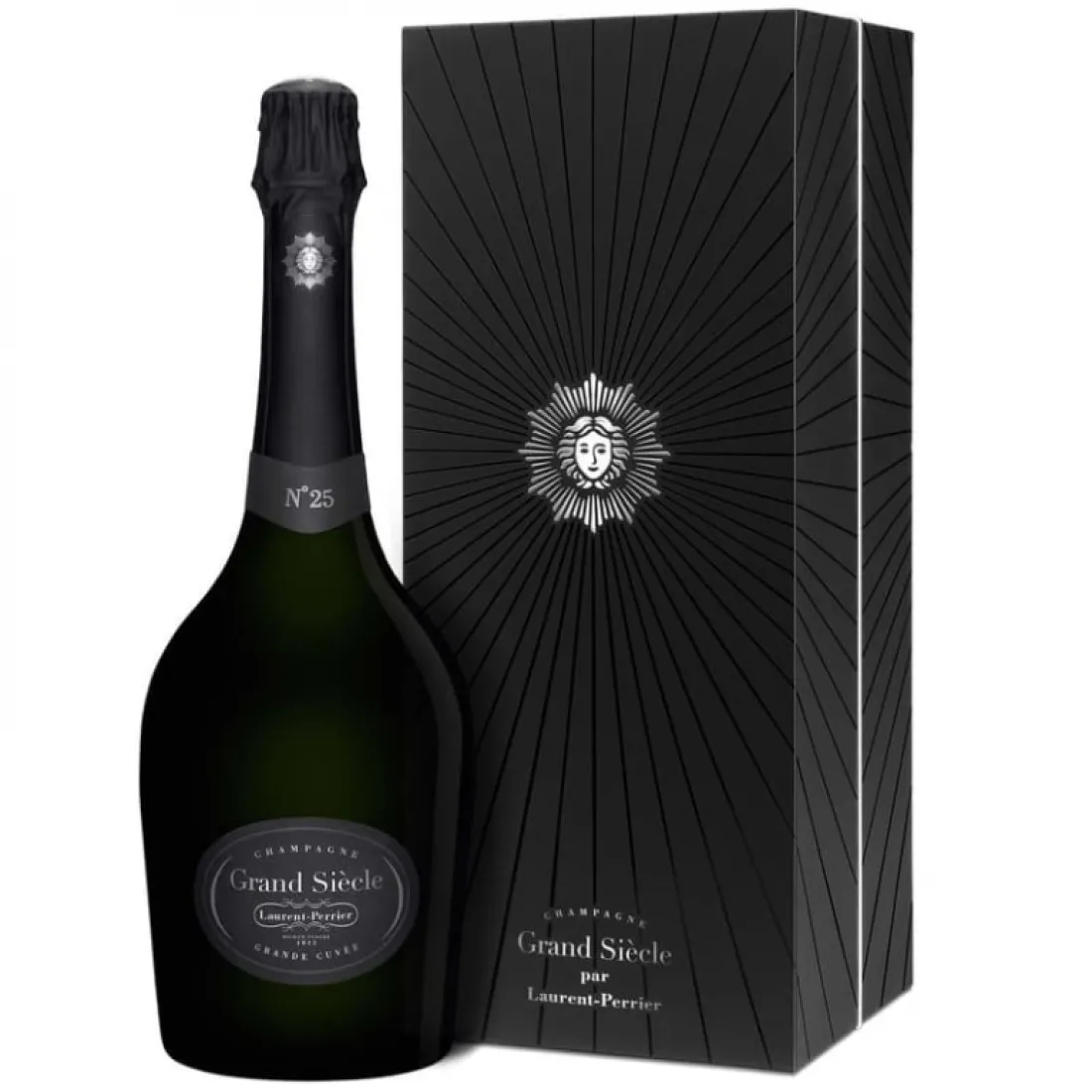



Leave a Comment